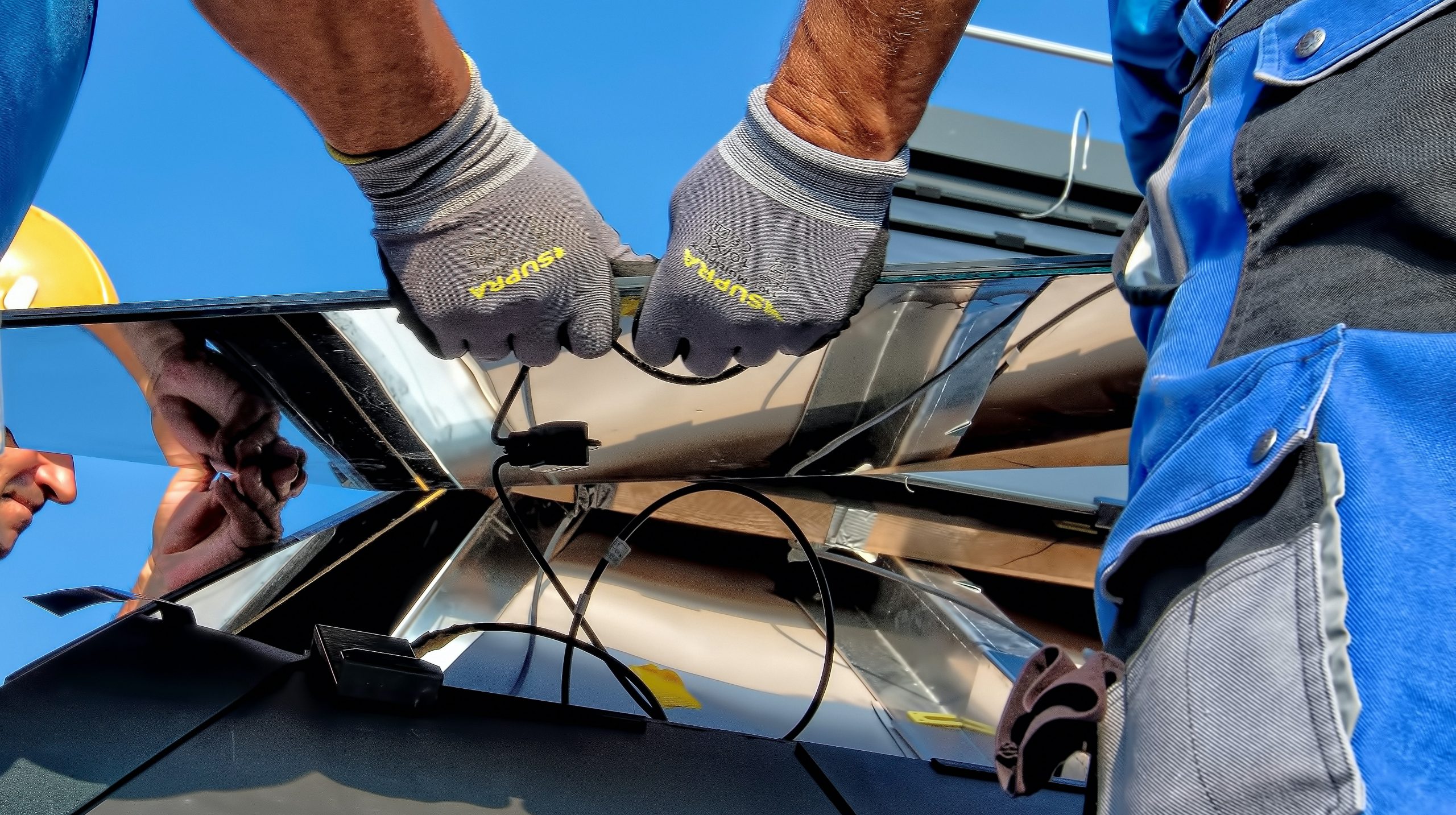Are you looking to power your house from a solar inverter? Well, we believe it’s a great decision.
The growth and purchase of solar inverters are rapidly increasing because they bring along massive benefits.
With the scope of increasing renewable energy sources worldwide, many individuals, house owners, business people, and environmentalists are seeking interest in shifting from traditional energy sources to solar systems.
Solar systems have gained massive importance due to their affordability, durability, and reliability.
But let’s start with the ABCs of solar inverters. By learning the answer to “How does a solar inverter work?”, you can make clear decisions.
Along with this, you will also be able to manage your solar inverters easily.
Thus, today, we’ll provide essential information about solar inverters, including what are solar inverters and how different types of solar inverters, based on design and connectivity, work.
We’ll also teach you how to check if your inverter is working properly and how to pick the right solar inverter.
What Is a Solar Inverter?
A solar inverter helps convert direct current (DC) generated by the solar panels into alternating current (AC) that can be used to power electrical loads made possible by several parts and tiny components.
The Three Main Parts of a Solar Inverter
A solar inverter has three essential parts: an electronic circuit board, a transformer, and an energy storage device known as a capacitor bank.
1. Electronic Circuit Board
The electronic circuit board powers all of the electronics inside the inverter and converts DC power into AC power.
It also regulates voltage and frequency by controlling when energy is supplied to each inverter section.
2. Transformer
The transformer is what converts DC power into AC power for the rest of your appliances and lights.
This conversion allows you to use any plug-in device without needing special adapters.
3. Capacitor Bank
The capacitor bank stores energy during periods of low sunlight and releases it when there’s enough sun to recharge it (this process is known as “solar cycling“).
It stores up enough energy so that you only need to charge infrequently.
The Smaller Components of Inverters
The inverters are comprised of several small components, including:
- A microprocessor that manages the system’s operation and monitors its performance.
- An ECU or electronic control unit is responsible for controlling the flow of electricity through the system and monitoring its performance.
- Power converters convert DC power from your solar panels into usable AC power.
- Rectifier diodes convert AC power back into direct current (DC) power.

How Does a Solar Inverter Work?
The question may seem simple, but it can be a bit complicated. If you’re unfamiliar with how inverters work, you may never know how they work. So, let’s get started by understanding how differently designed solar inverters work.
The Standard Solar Inverters
First, let’s talk about power. Power is just the energy a device has at its disposal. It’s measured in watts or kilowatts (kW).
The more sunlight it gets, the more power it can produce.
Solar panels are usually made up of silicon wafers laid out on sheets of glass like tiles in a roof or window.
Each one produces five volts of electricity when exposed to light from the sun. Other solar cells have less voltage but convert sunlight into electricity.
These are called “thin-film” panels because their layers are thinner than those used for silicon photovoltaics.
But how do they get turned into usable electricity? That’s where inverters come in!
Inverters take energy created by photovoltaic cells and use it to generate current.
The inverter can be located inside or outside of your home. If it’s inside your home, it is usually mounted on the roof.
Other than this, it could also be mounted on the ground or in a closet.
The Hybrid Solar Inverters
A hybrid solar inverter works like this: the sun shines on your roof, and the solar panels convert that energy into electricity.
You plug in a battery bank to store that power so you can use it later, and then you connect your batteries to an inverter.
Then the inverter turns that stored power into a current that can run all the appliances in your house.
The most common type of hybrid solar inverters is DC-DC converters, like the ones you’ll find at most hardware stores.
These have one input and two outputs: one for direct current (DC), which is what comes from the battery bank, and one for alternating current (AC), which is what comes from the grid or utility company.
They take both of these inputs and create DC power that appliances can use in your home.
Furthermore, it produces output AC power that those same appliances can use. All of this is done without moving parts!
The 3-Phase Solar Inverters
A 3-phase solar inverter is a device that converts the DC power generated by photovoltaic panels into AC. It is the heart of your solar power system.
The inverter controls the flow of electricity from your PV array to your home or business.
It also regulates voltage and frequency to ensure that each PV panel produces the correct amount of power.
How Do Grid-Tie Inverters Work?
A solar grid-tie inverter is a device that helps you to connect your solar panels to the power grid. It’s an essential part of your solar installation.
It can help you save money on your bills by allowing you to use the energy your panels generate immediately.
Solar grid-tie inverters receive power from the solar panels and store it in a battery pack. They then send that stored power back into the grid whenever needed.
The inverter also has built-in electronics that allow it to regulate how much power is sent back out.
The best part about this technology? It’s simple! You don’t need experience working with electricity or solar panels.
How Do Off-Grid Solar Inverters Work?
An off-grid solar inverter allows you to convert the direct current produced by the solar inverter panels into alternating current.
So, you can use your solar panel to power your home and charge your batteries, but also use it for other household purposes like lighting and appliances.
An off-grid inverter uses a pulse width modulation (PWM) controller. The PWM controller controls the amount of power going from the PV array to the loads through a power factor correction (PFC) inverter.
It helps improve your home’s energy efficiency.
Depending on where you live and what type of system you have installed, different off-grid inverters will be able to power many devices.
For example, suppose you have a large array connected with several panels angled toward the sun at other times each day.
In that case, you will need a more powerful inverter than if all your panels face directly toward the sun throughout the day.
How Do I Make Sure My Solar Inverter Is Working Correctly?
Now that you know how does a solar inverter work and how important it is, it’s time to learn how to identify whether it’s working.
First, you should check that there isn’t a problem with your battery or charge controller. If there is a problem, the inverter won’t function correctly.
If everything seems to be working fine, you should ensure there are no issues with your cables or connections. Also, check between the inverter and other components in your system.
If they’re also okay, something else may be wrong with your inverter. Either because it’s broken or because there was some damage from the water.
Even other substances during installation or use can damage the inverter.
If none of these cause problems with the operation, it’s time to call a professional to check and troubleshoot it or fix any issues.
What to Search for in a Solar Inverter
Now that you’re fully aware of how solar inverter works, you might wonder how you can find a good solar inverter.
After all, it is a critical part of the solar PV system.
So, here are some factors that ensure good quality solar inverter:
- The inverter’s efficiency is critical to getting maximum power output and returns on your investment. So, look out for solar inverters that have great efficiency.
- The installation process should be super easy. Many inverters come with kick-stands that ensure you can easily install them.
- Look for inverters that have a good size. Basically, inverters should be easy to mount on your roof, van, and more. Also, look for inverters that are easy to carry.
Comparing all these parameters, you can conclude that solar inverters are best used for photovoltaic modules.
Also, the performance and quality of solar modules, stand-alone systems, hybrid systems, and grid-connect systems depend on the type of solar inverter.
A Working Solar Inverter for an Endless Supply of Energy
These days, solar energy has become an increasingly attractive alternative power source for homes and businesses.
Whether you opt for off-grid or grid-tie inverters or standard or hybrid types, they all work by converting DC to AC.
No matter where you are, in the city or remote areas, you can access the sky’s endless supply of energy and use these inverters to power your home or business with little cost.

